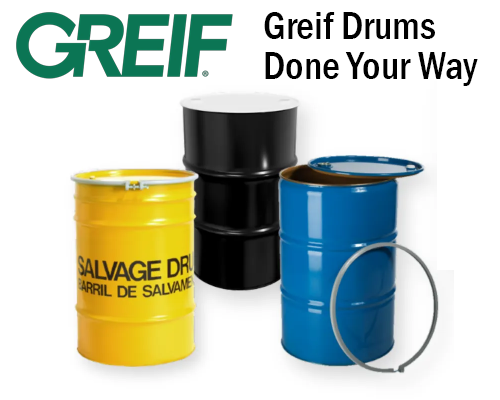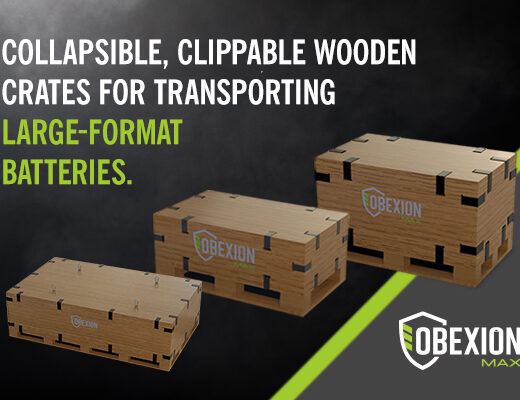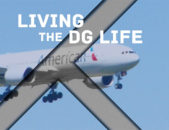Here is a snippet from the press release that went out this morning: “Integrating with SAP, the market leader in enterprise application software, makes perfect sense given the demand from our customers,” said Forest Himmelfarb, Vice President at Labelmaster. “SAP focuses in most of the industries where hazmat compliance is most acute, including the…
-
Introducing Greif Drums: The Smarter, Stronger, and More Sustainable Solution for Hazardous Material Storage
-
Embracing Sustainability in DG Packaging: A Path Forward
-
Have a hazmat question? Have a phone? Call our DG Regulations Hotline!
-
Label Finder Updates Include International Shipping Options
-
Want more large-format lithium battery packaging options? We’ve got good news.
Latest Posts
Compliant and Efficient Hazmat Shipping (Link to Inbound Logistics Magazine, April 2014)
The April 2014 issue of Inbound Logistics Thought Leaders features Labelmaster’s Vice-President of Software & Services, Forest Himmelfarb discussing Efficient and Compliant Hazmat Shipping. To learn more visit: http://www.inboundlogistics.com/cms/article/efficient-and-compliant-hazmat-shipping-today-you-can-have-both/
USDOT Releases Reauthorization Proposal
The United States Department of Transportation (USDOT) released its reauthorization proposal on April 29th. The massive bill, even the brief summary of which is over one hundred pages, will do everything from set priorities for federal highways, to issuing new rules for railroad passenger equipment purchases, to explicating in detail various budget line items for…
The Anatomy of a Proper Hazmat Label
Need to move, store or assure your products? Don’t leave it to chance! Whether you need your labels to be in compliance, endure harsh conditions, visibly display your message or whatever your need may be; trust Labelmaster! Not all labels are created equal and we get the science of labels. There are labels.…
More Action on Crude Oil Trains: US Federal Railroad Administration Issues May 7th Emergency Order/Safety Advisory
At approximately 1:15 AM EST on July 6th, 2013, a unit freight train of the cross-border operating Montreal, Maine, & Atlantic Railroad (MM&A) loaded with crude oil from the Bakken Shale Formations in North Dakota in the western United States derailed and multiple cars loaded with crude oil ruptured, caught fire, and exploded in the…
Clock Ticks Towards June 2015: Next OSHA/GHS Hazcom Deadline
There was a bustle of activity on the hazard communication front late last year as many companies scrambled to meet a December 1st 2013 federal deadline to train their employees in the required elements of the updated Hazard Communication regulation which fully embraced the Globally Harmonized System of Classification and Labeling of Hazardous Chemicals, or…
Have You Registered Yet for the The 9th Annual Dangerous Goods Symposium?
Have You Registered Yet? The 9th annual Dangerous Goods Instructors Symposium is open for registration! Join September 3-5th in sunny Scottsdale, Arizona for the opportunity to network with industry peers, learn about critical regulatory updates and participate in interactive training workshops. Whether you are a Dangerous Goods Shipping Instructor, Trainer or just work with Dangerous…
Come See Labelmaster if Attending ASSE, If Not, Get your Free Expo Pass Here!
Labelmaster will be exhibiting at the Safety 2014 show in booth #1235. Join more than 4,500 safety professionals at the much-anticipated ASSE Safety 2014 Professional Development Conference. Stop by our booth to learn more about our variety of solutions to help you ship Dangerous Goods safely and efficiently. Need an expo pass? Clink on the…
Interstate Commerce or Local Control? PHMSA Asked for a Decision
In two actions published in today’s Federal Register, the American Trucking Associations (ATA) has made an application to the Pipeline and Hazardous Materials Safety Administration (PHMSA) for an administrative determination on whether Federal hazardous materials laws would pre-empt requirements put in place by the cities of New York, NY and Pittsburgh, PA.
Labelmaster Packing Services is now DGM Chicago!
DGM Chicago specializes in providing customers with safe, efficient and reliable solutions for their Dangerous Goods shipments. Our extensive regulatory expertise allows us to provide a full range of solutions to facilitate efficient Dangerous Goods shipping.











